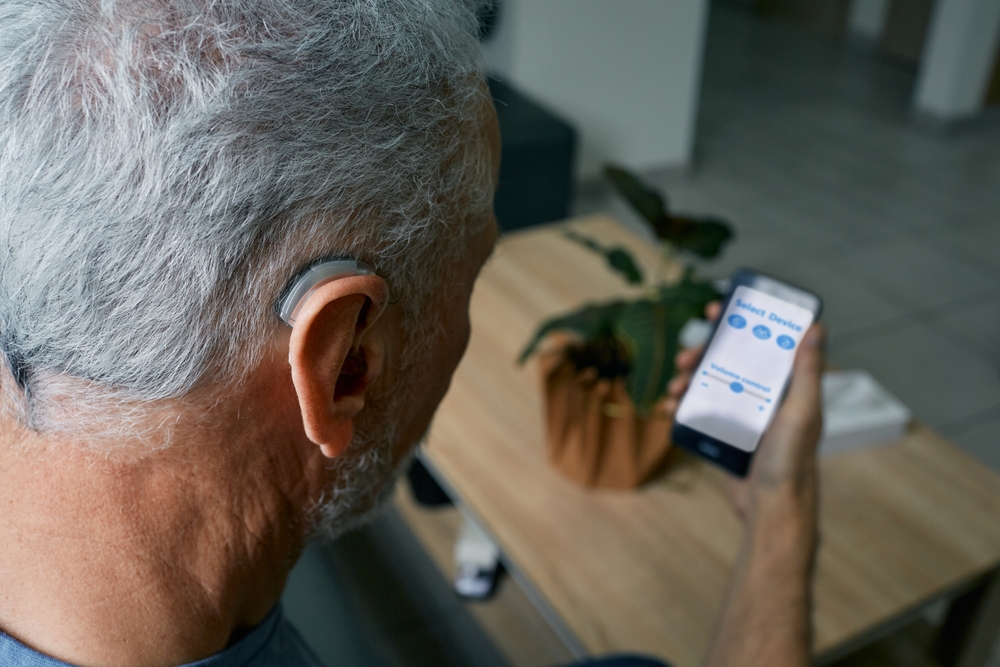Susan is a very busy person. Between work, family, and active social life it’s hard to find the time to make appointments for her health much less keep them. And that’s why she’s thrilled that she figured out how to order devices to improve her hearing online. She doesn’t have to make time in her schedule for a hearing test, fitting or any of that. She’s so happy about this discovery that she can’t help but go through the rest of her day sporting a self-satisfied grin–almost like she won the lottery or something.
But chances are, Susan is not going to get what she paid for. That’s because she skipped a vital part of the process: the hearing aid fitting. These crucial fitting sessions are designed to help customize the fit–and the operation–of your hearing aids. And your hearing aid won’t be quite the same without them.
What happens during a hearing aid fitting?
In general, a hearing aid fitting may be one long session or broken up into several appointments. In general, though, here’s what happens:
- First, you’ll have some general conversations about what types of hearing aids might work best for your degree of hearing loss. There are lots of types to choose from, and they each have their own strengths and drawbacks. This conversation is based on the results of a hearing test, which will reveal the frequencies you’re struggling to hear and how strong the hearing aid needs to be to be effective.
- At this point, your hearing specialist may take some molds of your ears. This can help with the creation of a completely custom hearing aid shell for maximum comfort and fit. Hearing aids that don’t fit properly can cause feedback or worse, feel so uncomfortable you don’t wear them. And what’s the point of that?
- Once your hearing aids arrive, you’ll have another meeting with your hearing specialist.
During that meeting, the specialist will program your hearing aid specifically to match the results of your hearing test. The hearing aids will amplify the frequencies you struggle to hear, but not amplify the rest. This brings voices “into focus” and provides clarity of sound much the way prescription glasses will focus your vision. If you skip this step (or buy a device that can’t be programmed) you will still struggle to hear a conversation, and some frequencies will be uncomfortably loud.
- The hearing specialist will also discuss the general operation and maintenance of your hearing aids.
- You’ll try your hearing aids out, ensuring they are comfortable enough for everyday use.
- Your hearing specialist will run several specialized diagnostics to ensure the hearing aid is working properly and is calibrated precisely.
The purpose of your hearing aid fitting is to ensure that all of your hearing aid settings and options are as tailored to you as possible. This is essential because that’s the whole purpose of hearing aids–to hear clearly when and where you need to.
Real ear measurement
To that end, many hearing aid fittings will include a specific test called a Real Ear Measurement. During this diagnostic, a special microphone will be placed inside your ear canal (it’s fitted on a thin wire, so most people barely even feel it). Then, you’ll put your hearing aid in place and let it work naturally.
The device will then detect whether the hearing aid output is at your prescribed volume level. Rather than relying on how your hearing “feels” in those first few moments (which can be a bit tricky, especially if you’re acclimating to hearing aids for the first time), this test gives hearing specialists hard data with which to measure the effectiveness of your hearing aid.
Once those measurements are taken, your hearing specialist will be able to make changes to the settings of the hearing aid. All of these tests and diagnostics work together to ensure you get the best hearing aid experience possible.
A just-for-you hearing aid
That custom experience is something you just won’t get with an online purchase experience, mostly because you won’t go through a professional hearing test and the programming process.
So Susan, who purchased a device online, will receive a hearing aid that’s not customized for her, that won’t perform as well as it could, and that likely won’t be very comfortable. Eventually, she’ll just stop wearing it. Susan will probably blame the hearing aid, of course. All of which could have a negative impact on Susan’s hearing health in the long run.
That device lifecycle is unfortunately common with online and over-the-counter hearing aids.
Hearing aids can be life-changing when they are customized to you and your needs.



